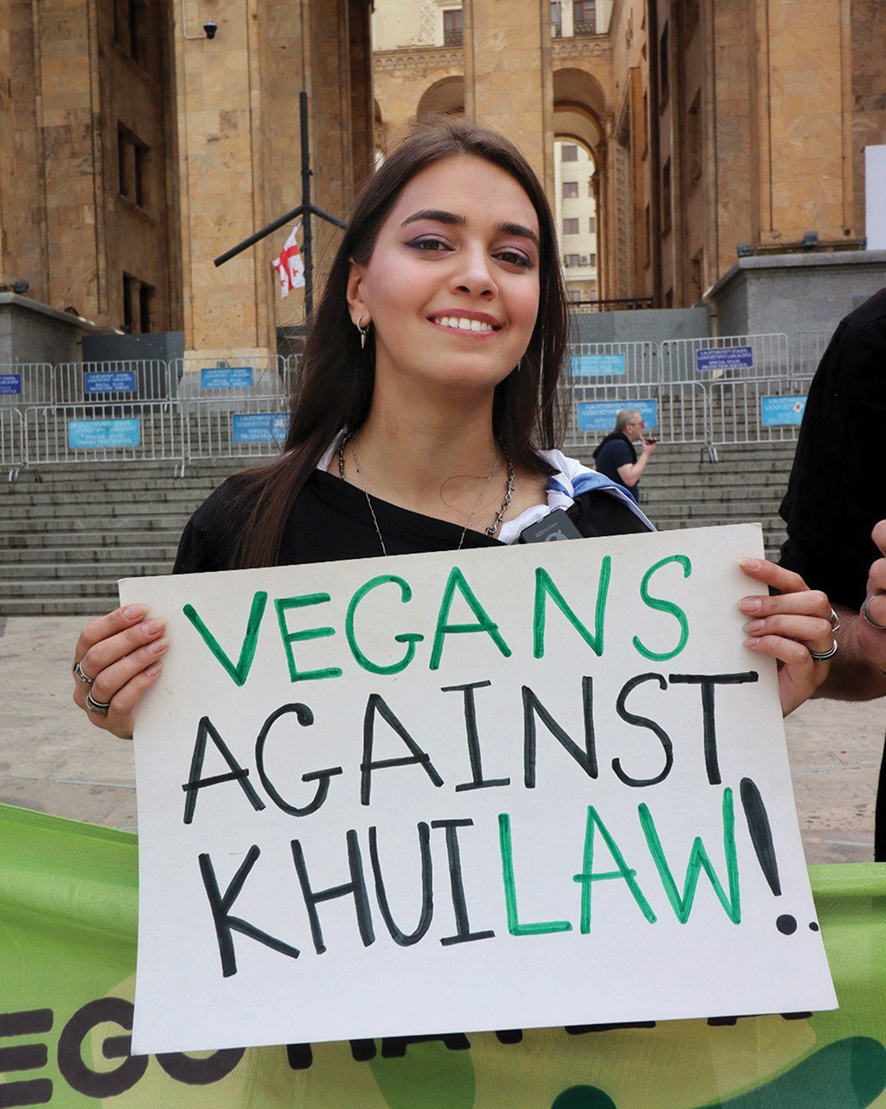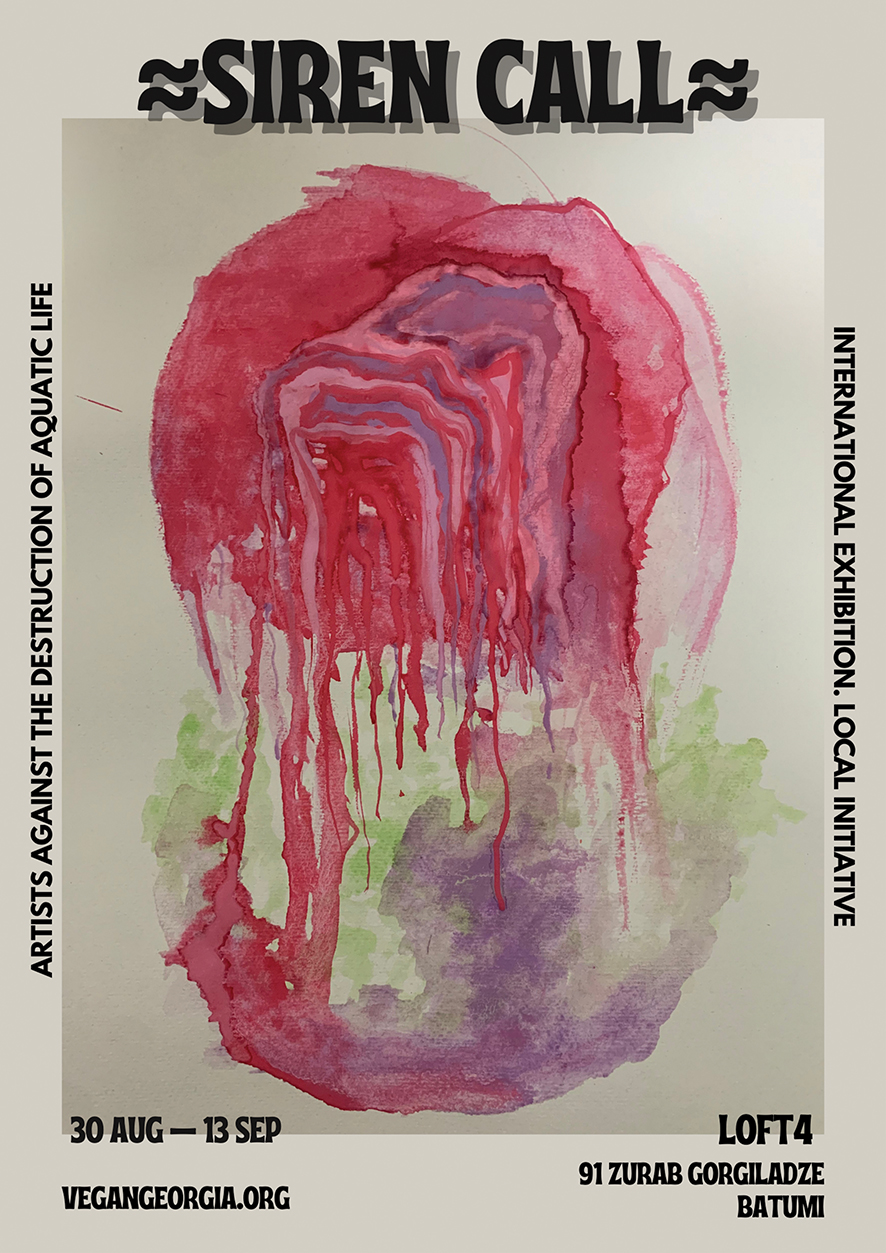Can art save lives? It seems like the activists of Vegan Georgia think it possible. The exhibition ‘Siren Call,’ opening August 30, has a very specific subject — aquatic animals and their troublesome existence in our modern world. GEORGIA TODAY sat down with Oleg Ozerov, Vegan Georgia Vice President and curator of the project, and Nini Turiashvili, Vegan Georgia President, to talk about the reasons and expectations behind this event.
Important notice! The “Siren Call” exhibition will take place not in Batumi, as originally planned, but at the huge and amazing “End of Summer” art festival, here.
How did you come up with the idea of making a project dedicated specifically to aquatic animals
Oleg Ozerov, Vegan Georgia Vice President and curator of the project: It’s not the first exhibition we’ve organized, but it’s our first project devoted to this very special and very fragile group of animals. Aquatic animals are by quantity the most killed and most neglected by habit. Fishermen and farmers don’t even count their casualties by number of individuals, but by tons. Fish and other sea inhabitants account for the vast majority of all the animals killed in the world annually. And the problem is even deeper than their mindless extermination by industrial fishermen net: The problem is human attitude. Science tells us that the closer physiology we have with certain animals, the easier it is for us to put ourselves in their place and thus feel compassion. Since it’s quite hard for people to associate with aquatic animals, they are the most “outsider” among all the animals killed for food. And animals killed for food in their turn account for up to 97% of all animals killed in the world. This is why we feel it extremely important to speak out for them, and precisely about nautical creatures. At least, in the ranks of this project.

Do you believe that art, aimed at kindness and respect, can change the world?
Nothing and no one can change the world in one day. Nor can art. I believe that art can help a person feel and think. All the revolutionary transformations on our planet began from this tiny spark. And you never know which project or even artwork can ignite the fire. One of the moments when I really became interested in animal rights was when I saw an “antifur” sticker in the bus. It was many years ago, but I still remember the moment. Art has the capacity to highlight some things which, in everyday life, full of routine and chaos, we often tend to put in the attic of our reflections. Bringing these thoughts and feelings to the surface is one of the goals this project can achieve.
What are the other goals of this exhibition?
The art scene is generally very close to the animal rights scene in terms of deep emotional connection, empathy, and tendencies to philosophical research. Entering and developing this scene with our antispeciesist approach is a great adventure which we are going through together with all the amazing people we meet on our creative way, making collaborations and building communications. Even if no one at all goes vegan or engages in animal advocacy after visiting the show, for us, it is still important to converge with the art circles. We are being open minded in so many artistic activities, and artists are able to be exposed to our values and beliefs in a common and comfortable way. In the case of this project, we provide artists from all over the world the chance to express their views on the problem of the exploitation of aquatic animals. Animals don’t have a voice in our society, so humans — artists in our case — and their art become the voices from the sea, demanding compassion and justice.

Why do you find it important to hold such a special exhibition today, and why did you originally plan it in Batumi?
Nini Turiashvili, Vegan Georgia President: Holding this kind of event has high importance today, because the whole world is facing an ecological crisis and a historical turning point in terms of animal rights. We opened the first vegan exhibition in Georgia on November 1, 2023, on World Vegan Day. And this year, we decided to hold the exhibition in another city, and we chose Batumi, one of the most beautiful seaside towns yet, unfortunately, one that is closely associated with the destruction of marine life and pollution of water supplies. At the same time, Batumi is the largest tourist center, where many artists gather, who are also interested in veganism and ecological issues. Unfortunately, in Batumi, there is a dolphinarium, an object of cruel entertainment that is incompatible with the civilized world, against which we have had many activities over the years. We would like to dedicate the exhibition to the fight against the dolphinarium and the oppression of marine life in general.
How do you see the goal of this project?
The main goal is to raise public awareness of the idea of animal freedom through art. The essence of the exhibition is for the population to know more information about veganism, about the dolphinarium and, in general, about the unfair side of animal exploitation, about an eco-friendly lifestyle. Our extraordinary works of art will guide visitors on this educational journey.

There are many creative people among Vegan Georgia activists and their supporters. Is there any connection between the interest for veganism and arts, in your opinion?
In my life experience, veganism is often really connected to different kinds of art. I’m a self-taught artist myself, and I think my close connection with art has had some influence on the formation of my worldview and personal characteristics. In general, veganism, like art, involves non-conformism, perceiving reality from a different perspective, and the ability to be brave. I think it is precisely these essential similarities that make it possible for many artists to choose a vegan lifestyle.
By Team GT














